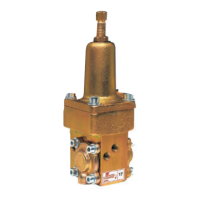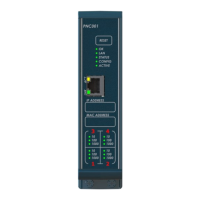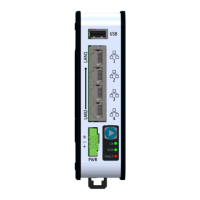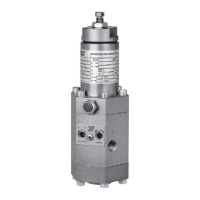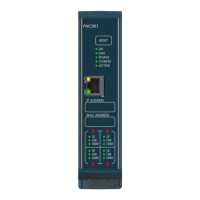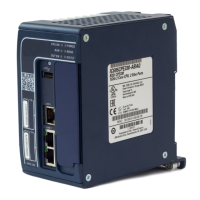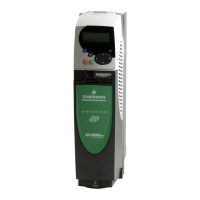Pole pairs = 60 x Rated Frequency (05.006) / Rated Speed (05.008) rounded down to the nearest integer.
Parameter 05.012 Auto-tune
Short description Defines the auto-tune test to be performed
Mode Open‑Loop
Minimum 0 Maximum 2
Default 0 Units
Type 8 Bit Volatile Update Rate Background read
Display Format Standard Decimal Places 0
Coding RW, TE, NC
Value Text
0 None
1 Basic
2 Improved
The following describes how an auto-tune test can be initiated and normal operation can be resumed after the test for Open-loop mode:
1. An auto-tune test cannot be initiated if the drive is tripped or the drive inverter is active, i.e. Drive Healthy (10.001) = 0 or Drive Active (10.002) = 1. The inverter can be made inactive by ensuring that the Final drive enable
is inactive, or the Final drive run is inactive and Hold Zero Speed (06.008) = 0.
2. An auto-tune test is initiated by setting Auto-tune (05.012) to a non-zero value and making the Final drive enable and the Final drive run active.
3. All tests that move the motor will move the motor in the forward direction if Reverse Select (01.012) = 0 or the reverse direction if Reverse Select (01.012) = 1.
4. If the auto-tune sequence is completed successfully the Final drive enable is set to the inactive state and Auto-tune (05.012) is set to zero. The Final drive enable can only be set to the active state again by removing the
enable and reapplying it. The enable can be removed by setting Drive Enable (06.015) = 0, or by setting bit 0 of the Control Word (06.042) to 0 provided Control Word Enable (06.043) = 1, or by making Hardware Enable
(06.029) = 0.
5. If a trip occurs during the auto-tune sequence the drive will go into the trip state and Auto-tune (05.012) is set to zero. As in 4. above the enable must be removed and re-applied before the drive can be restarted after the
trip has been reset. However, care should be taken because if the auto-tune was not completed the drive parameters that should have been measured and set up will still have their original values.
6. If the Final drive enable is made active, the Final drive run is inactive and Hold Zero Speed (06.008) = 1 the drive would normally be in the Stop state (i.e. the inverter is active, but the frequency or speed reference is 0).
The following describes the effects of the auto-tune test on the drive parameters for Open-loop mode:
1. All auto-tune tests rely on the motor being stationary when the test is initiated to give accurate results.
2. If Select Motor 2 Parameters (11.045) = 0 then the parameters associated with motor map 1 are updated as a result of the test, and if Select Motor 2 Parameters (11.045) = 1 the parameters associated with motor map 2
are updated.
3. When each stage of the test is complete the results written to the appropriate parameters and these parameters saved in the drive non-volatile memory. If Parameter Cloning (11.042) is set to 3 or 4 the parameters are
also written to a non-volatile media card fitted in the drive.
The table below shows the parameters required for motor control indicating which should be set by the user and which can be measured with an auto-tune test.
Parameter Required for Measured in test
Rated Frequency (05.006) Basic control User set-up
Rated Current (05.007) Basic control User set-up
Rated Speed (05.008)
Slip compensation
Spinning start
User set-up
Rated Voltage (05.009) Basic control User set-up
Rated Power Factor (05.010) Basic control 2
Stator Resistance (05.017)
Ur, Ur I, Ur S and Ur Auto modes
Spinning start
1, 2
Transient Inductance (05.024) Improved performance 1, 2
Stator Inductance (05.025) Improved performance 2
Maximum Deadtime Compensation (05.059) Basic control 1, 2
Current At Maximum Deadtime Compensation (05.060) Basic control 1, 2
No-load Core Loss (04.045) Torque feedback* 2
Rated Core Loss (04.046) Torque feedback* User set-up
*Torque feedback is provided in Percentage Torque (04.026). The estimated value can be improved by setting up the No-load Core Loss (04.045) and Rated Core Loss (04.046) for the motor. It should be noted that the core loss
characteristic for a motor is complex and depends to some extent on the switching frequency, but the drive can include an approximation to the core losses based on these two parameters. The value for the no-load core losses measured
by the auto-tuning is likely to be higher than the actual value, but can be used to significantly reduce the difference that will be seen in the estimate torque between motoring and regenerating operation. If more accurate core loss
compensation is required No-load Core Loss (04.045) and Rated Core Loss (04.046) must be set up based on testing the motor using a torque transducer.
1: Basic
This test measures the basic control parameters without moving the motor.
1. A stationary test is performed to measure Stator Resistance (05.017), Transient Inductance (05.024), Maximum Deadtime Compensation (05.059) and Current At Maximum Deadtime Compensation (05.060). If
Enable Stator Compensation (05.049) = 1 then Stator Base Temperature (05.048) is made equal to Stator Temperature (05.046).
2: Improved
This test measures the parameters for improved performance by rotating the motor.
1. Auto-tune test 1 is performed.
2. A rotating test is performed in which the motor is accelerated with the currently selected ramps up to a frequency of Rated Frequency (05.006) x 2/3, and the frequency is maintained at that level for 4 seconds.
Stator Inductance (05.025) is measured and this value is used in conjunction with other motor parameters to calculate Rated Power Factor (05.010). The no-load motor core losses are measured and written to No-
load Core Loss (04.045). It is not possible to measure the rated load motor core losses, and so Rated Core Loss (04.046) is set to zero. The motor should be unloaded for this test.
The table below shows the trips that can occur during an auto-tune test:
Trip Reason
Trip can occur in
test
Autotune Stopped The final drive enable or the final drive run were removed before the test was completed. All
Resistance.001
The measured value of Stator Resistance (05.017) exceeded a value of (V
FS
/ √2) / Full Scale Current Kc (11.061), where V
FS
is the full scale d.c. link voltage.
All
Resistance.002
It has not been possible to measure the drive inverter characteristic to define Maximum Deadtime Compensation (05.059) and
Current At Maximum Deadtime Compensation (05.060).
All
Parameter 05.013 Dynamic V To F Select
Short description Set to 1 to enable Dynamic V to F mode
Mode Open‑Loop
Minimum 0 Maximum 1
Default 1 Units
Type 1 Bit User Save Update Rate Background read
Display Format Standard Decimal Places 0
Coding RW
Dynamic V to F mode is intended for applications where power loss should be kept to a minimum under low load conditions, but dynamic performance is not important. The reduction in power loss under low load conditions is achieved by
increasing the rated frequency used to derive the frequency to voltage characteristic of the drive with reduced load. If Dynamic V To F Select (05.013) = 0 then Rated Frequency (05.006) is used directly to define the output voltage
characteristic. If Dynamic V To F Select (05.013) = 1 then a modified value of rated frequency is used when |Percentage Load (04.020)|
rated frequency = Rated Frequency (05.006) x [2 - |Percentage Load (04.020)| / 70.0%]
For higher load levels Rated Frequency (05.006) is used directly.
Parameter 05.014 Open-loop Control Mode
Short description Defines the drive output mode, which can either be a voltage mode or a current mode
Mode Open‑Loop
Minimum 0 Maximum 6
Default 4 Units
Type 8 Bit User Save Update Rate Background read
Display Format Standard Decimal Places 0
Coding RW, TE
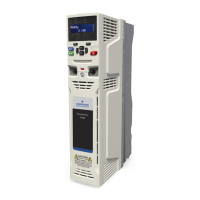
